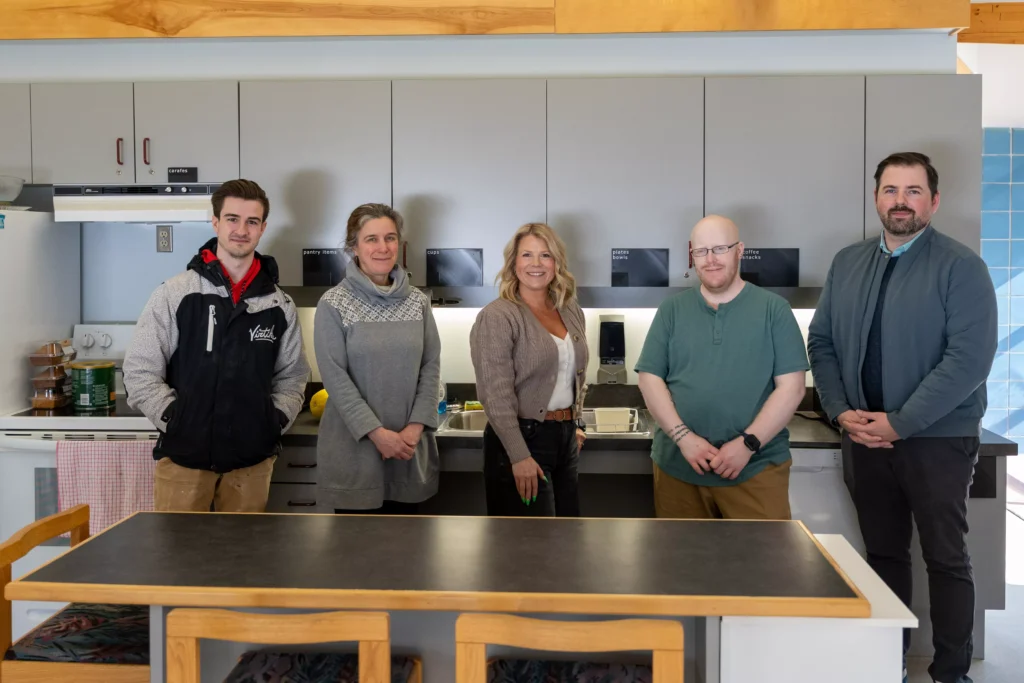Confederation College’s Applied Research and Innovation team has teamed up with the Canadian National Institute for the Blind (CNIB) and Vision Loss Rehabilitation Canada (VLRC) to create a smart, durable 3D-printed Braille signage solution for people with vision loss. This project was designed to improve accessibility in a rehabilitation kitchen used for helping individuals develop or regain cooking skills.
Why This Project Matters
At CNIB’s practice kitchen in Thunder Bay, people with vision loss learn how to navigate and use kitchen tools safely. Until now, the facility used paper Braille signage, which didn’t hold up well over time. That’s where Confederation College’s Advanced Manufacturing team, led by Research Supervisor Greg Gagnon, saw an opportunity to make something better.
“The development of this signage required us to rethink conventional techniques,” said Gagnon. “Using two different processes, we were able to ensure that the signs are both cost-effective and optimized for accessibility.”
The Printing Process: Smooth, Tactile, and Clear
Traditional 3D printing can result in rough or sharp edges—not ideal for reading Braille. To overcome this, the team used a dual-process 3D printing approach that produced smooth, raised large-print text alongside clearly legible Braille dots.
The result is a set of strong, easy-to-read tactile signs that are also simple to install and maintain. Importantly, the materials and techniques were chosen to keep production costs low, making them accessible to more organizations.
Getting It Right with Real Feedback
CNIB helped test the prototypes with an actual Braille reader before the signs were installed. Their feedback helped refine the final product to ensure maximum readability and usefulness.
“Accessibility means removing obstacles, and initiatives like this have a significant impact,” said Tanis Boardman, Manager of Ontario Programs and Community Engagement at CNIB. “We’re excited to collaborate with the College on this project, which will help individuals with vision loss in Thunder Bay and raise awareness about the importance of accessible signage.”

Creating Lasting Impact Through Collaboration
This project is part of Confederation College’s broader efforts through its Applied Research and Innovation office, which works with community groups, industry leaders, and educators to solve real-world problems. These partnerships not only benefit the community but also give students hands-on experience and help faculty grow professionally.
3D Printing and Accessibility: A Growing Opportunity
This isn’t the only example of how 3D printing is making a real difference for people with vision loss. A similar initiative took place at Austin Peay State University, where a student created a 3D-printed tactile map of the campus.
Inspired by a NASA tactile guide that explained solar eclipses using Braille and raised graphics, the project aimed to help blind and low-vision students navigate their surroundings independently.
The 3D map featured:
- Raised buildings labeled with Braille
- Lowered lawns and flat surfaces
- Raised plus signs for roads and parking lots
- Easy-to-follow sidewalks, designed as prominent raised lines
“This map gives students the ability to live without relying on someone else,” said student designer Michael Hunter. “It gives them the freedom to be more independent.”

Why 3D Printing Matters for the Visually Impaired
Projects like these show how 3D printing can do more than just make prototypes or models. It can create real-world tools that empower people with vision loss—tools that offer not just access, but independence and confidence.
Whether it’s tactile signage or interactive maps, 3D printing helps break down barriers and make environments more inclusive for everyone.
